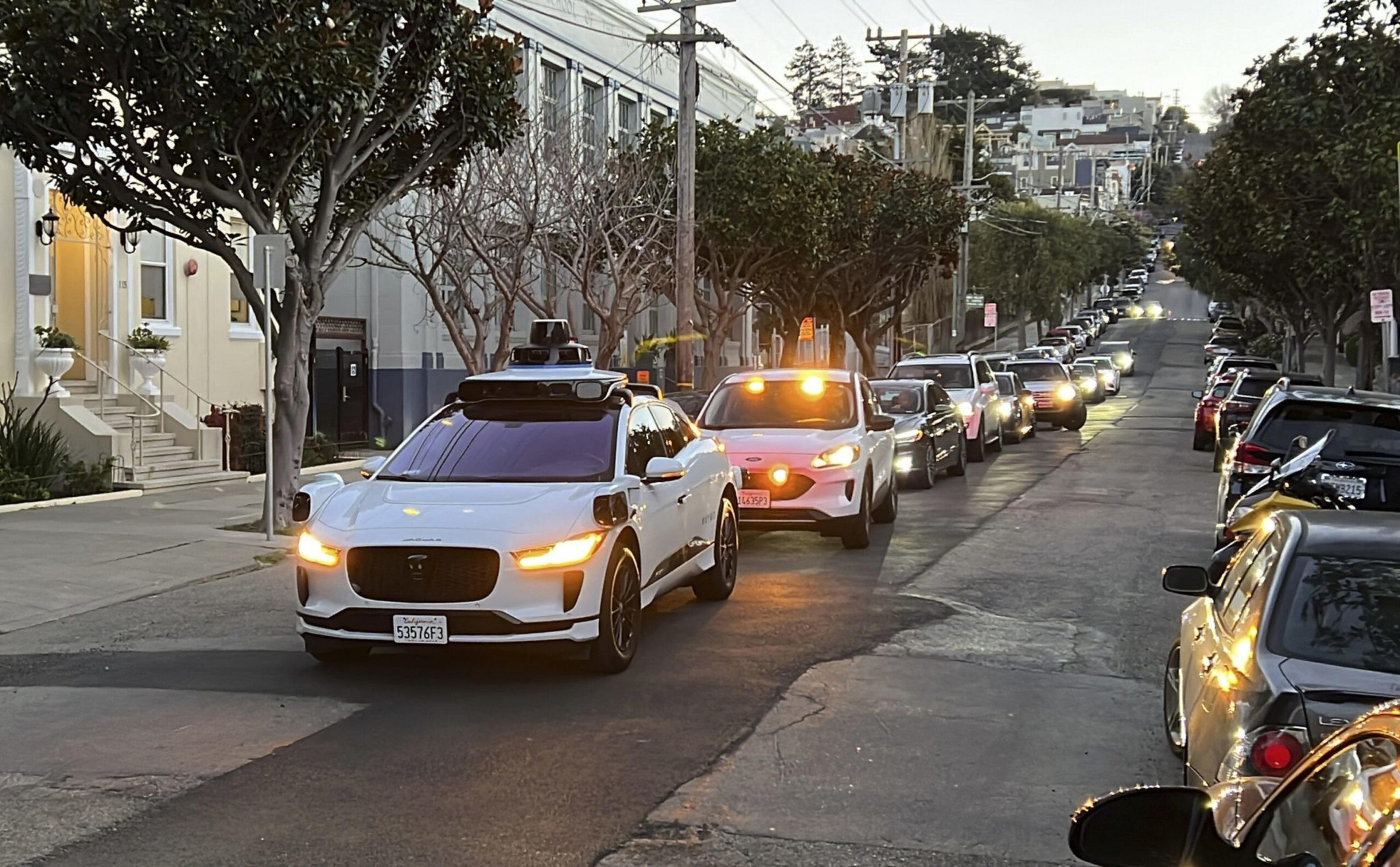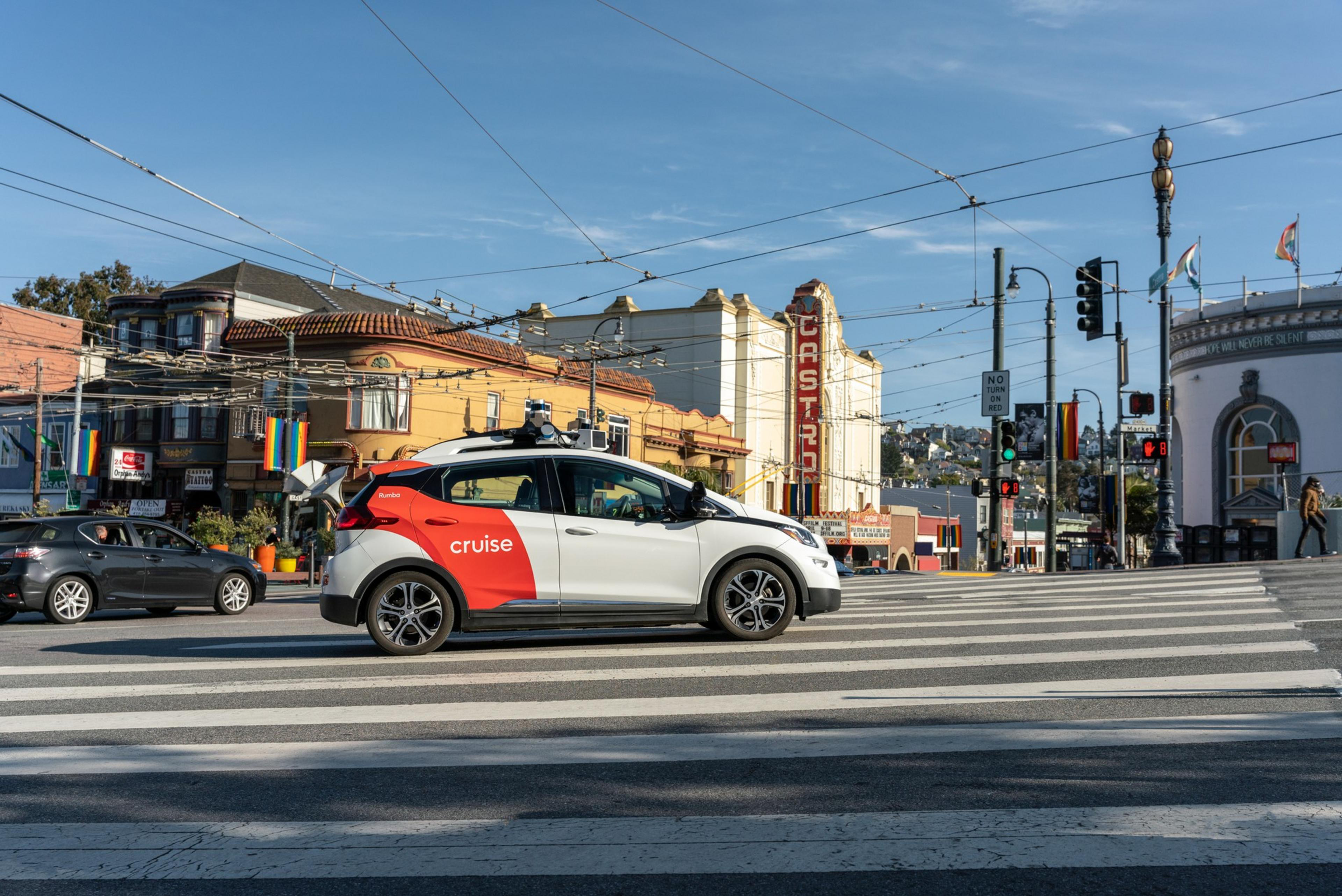A scheduled vote by the California Public Utilities Commission (CPUC) that could allow the unlimited expansion of Cruise and Waymo robotaxis on public streets has been postponed (opens in new tab) until July 13 for further review.
Lobbyists, interest groups and city officials had been gearing up for months for a showdown at the often under-the-radar state commission meeting scheduled for June 29. However, as a chorus of local public safety and transit officials called for a slowdown in their expansion plans, CPUC Commissioner Genevieve Shiroma has chosen to delay the item until the board’s meeting next month.
Within the last week, the San Francisco Fire Fighters Local 798 (opens in new tab), the San Francisco Police Officers Association (opens in new tab) and the San Francisco Deputy Sheriffs’ Association (opens in new tab) have sent comment letters to the commission highlighting their concerns with the interactions between autonomous vehicles and emergency services.
Those letters accompanied protests and comments by San Francisco Municipal Transportation Agency officials, including public statements from agency head Jeffrey Tumlin, who said that Cruise and Waymo cars have only “met the requirements for a learner’s permit” rather than an actual driver’s license.
“We appreciate that the Commission has slowed their process slightly and look forward to talking further with the industry and commissioners,” Tumlin said in a statement about the delay.
But the CPUC pushed back on some of the claims made by San Francisco officials.

The commission criticized San Francisco’s (opens in new tab) calculation that Waymo’s injury collision rate is higher than human drivers, stating that it was based on a small amount of data and lacked “sufficient rigor and nuance.” The commission pointed out that the accidents mentioned by local officials involved a safety driver, saw minor injuries and were mainly caused by human drivers rear-ending autonomous vehicles. It made similar arguments (opens in new tab) for the claims made by local transit officials against Cruise.
“Extrapolating from less than 2 million miles to 100 million, and then comparing to a national average without normalizing for factors such as roadway type (e.g. arterial vs. local street) or land use context (e.g., urban, suburban, or rural) introduces an unacceptably high degree of statistical error and uncertainty,” the CPUC wrote.
In a statement, Waymo said it was disappointed by the commission’s delay and that its data to date has shown no collisions involving pedestrians or cyclists. The company said that the city’s comments included false information and mischaracterized the company’s safety record. Waymo has requested a formal correction from San Francisco officials.
“We urge the CPUC to take up Waymo’s deployment permit at the earliest possible opportunity. We will continue to work with the CPUC and other state regulators to bring this safer transportation choice to more San Franciscans,” Waymo said in a statement.
Both Cruise and Waymo officials noted that 2022 was the worst year on record for traffic fatalities in San Francisco since 2014.
“We’re proud of our safety record, which is publicly reported and includes millions of miles driven in an extremely complex urban environment,” said Hannah Lindow, a Cruise spokesperson, adding that a number of business and disability rights groups have sent letters in support.
Initially, commission staffers largely sidelined the concerns of SF transit officials on jurisdictional grounds, but it’s clear that the sustained pressure campaign has had its intended effect.
Over the past few weeks, the vote on Cruise and Waymo’s expansion has slid from a consent item—which normally means an approval without much public discussion—into a regular agenda item and now into a postponement.
In part due to the concerns raised by San Francisco officials and others in their communications with the CPUC, Shiroma previously called for an expedited rule-making process (opens in new tab) for stronger public data sharing. A public hearing (opens in new tab) on the topic featuring Cruise, Waymo and San Francisco officials was held last week.
Those requirements could include (opens in new tab) publicly available reports on accidents within 10 days, monthly reporting around the number of trips along with origins and destinations, data on the passengers carried, the number of unique vehicles operated and vehicle miles traveled.
Shiroma did not respond to a request for additional comment about her postponement decision.
Billy Riggs, a University of San Francisco professor who studies transportation innovation, spoke on the CPUC-hosted panel about data sharing.
“I don’t think San Francisco wants the industry to fail, but there’s ambiguity of how much, what data and how it should be shared,” Riggs said. “There’s concern from the companies that they played by the rules, but now you’re changing the rules in the middle of the game.”
Riggs said he’s bullish on the potential for autonomous vehicles to strengthen and broaden existing public transit networks.
“Public transport operators don’t like to give up control of the transportation ecosystem, but what we’re seeing more and more is that they’re not providing service that consumers want or they think is reliable and convenient,” Riggs said.
Even after the vote delay, momentum organizing against the rise of autonomous vehicles continues. Taxi and app-based drivers still plan to protest outside the CPUC on Thursday at 10 a.m., underscoring the anticipated disruption to traffic safety and labor.
Barry Taranto, a cab driver of 21 years, is glad for the delay. His main concern at this time is the technology causing problems for city streets; ultimately, he wants the state to better adapt laws to the times. He sees several robotaxis each night disrupting other traffic.

“My main concern now is the technology is not advanced enough for them to operate properly on the streets,” said Taranto, who sits on the board of the San Francisco Taxi Workers Alliance. “The cars get confused and results in them being stalled out or in the way.”
Marcelo Fonseca, a cab driver of 34 years, is primarily concerned by a proposal that lets another new technology company operate rides in San Francisco without $250,000 medallions that several taxi drivers are still paying loans on (opens in new tab).
To Fonseca, it harkens back to when Uber and Lyft were approved for use over a decade ago without sufficient restrictions like capping the number of vehicles they can have on the road. A decent living is hard to come by for cab drivers and Uber and Lyft drivers alike, he added.
In his view, the future doesn’t look bright for human drivers and “brings a lot of anxiety.”
“It’s a race to the bottom,” Fonseca said. “The [CPUC] should have learned from the mistakes made from approving Uber and Lyft. We’ll try to adapt, but it doesn’t sound good.”
